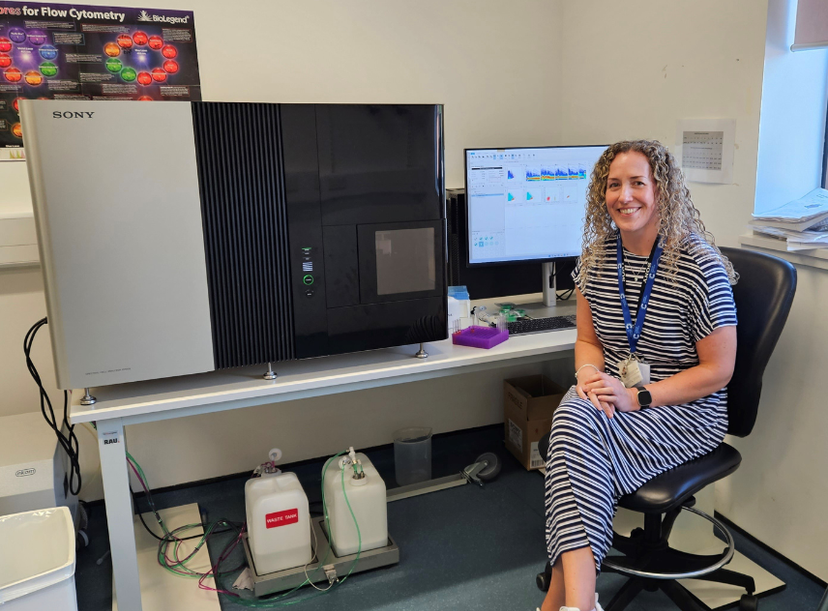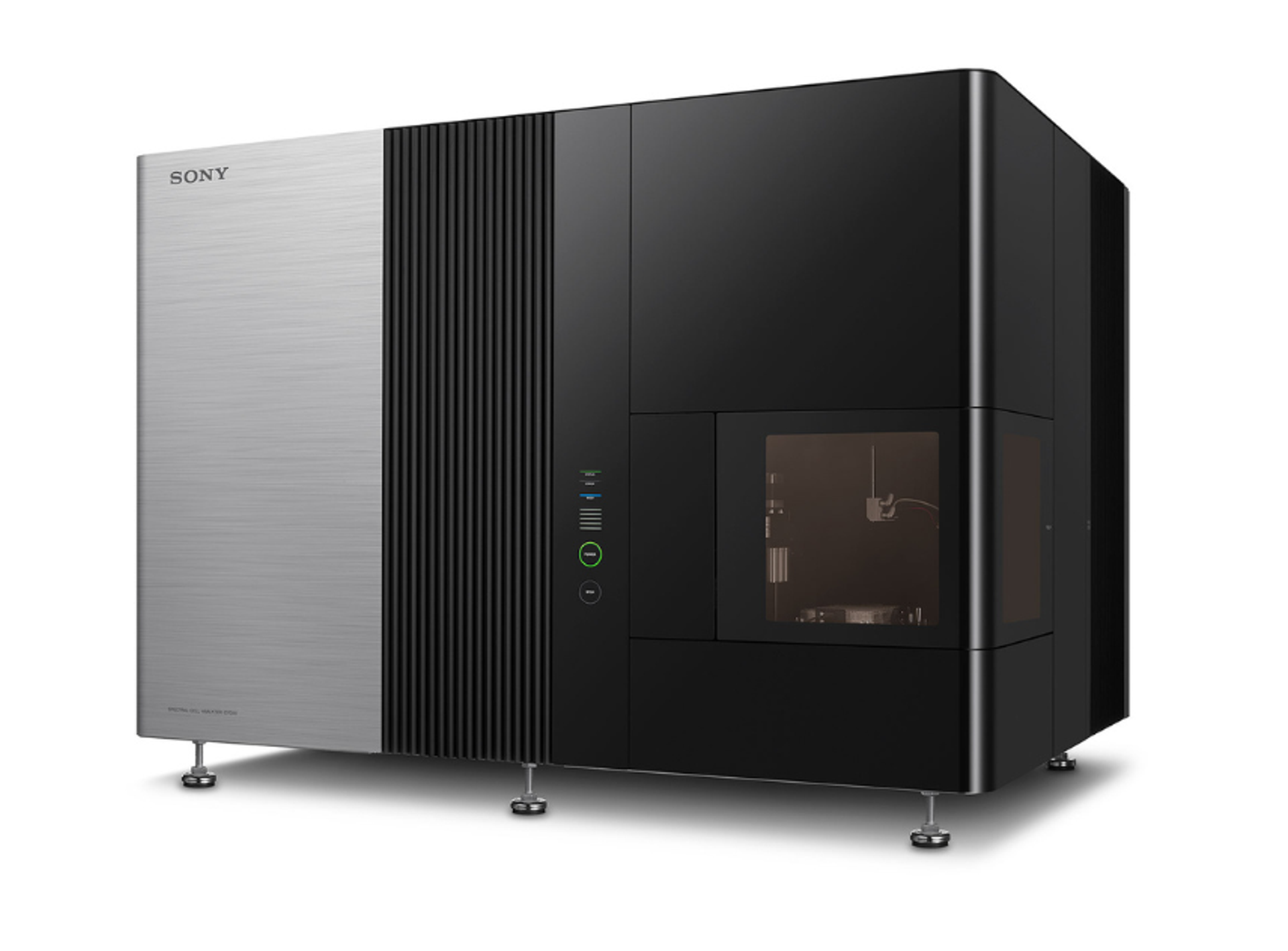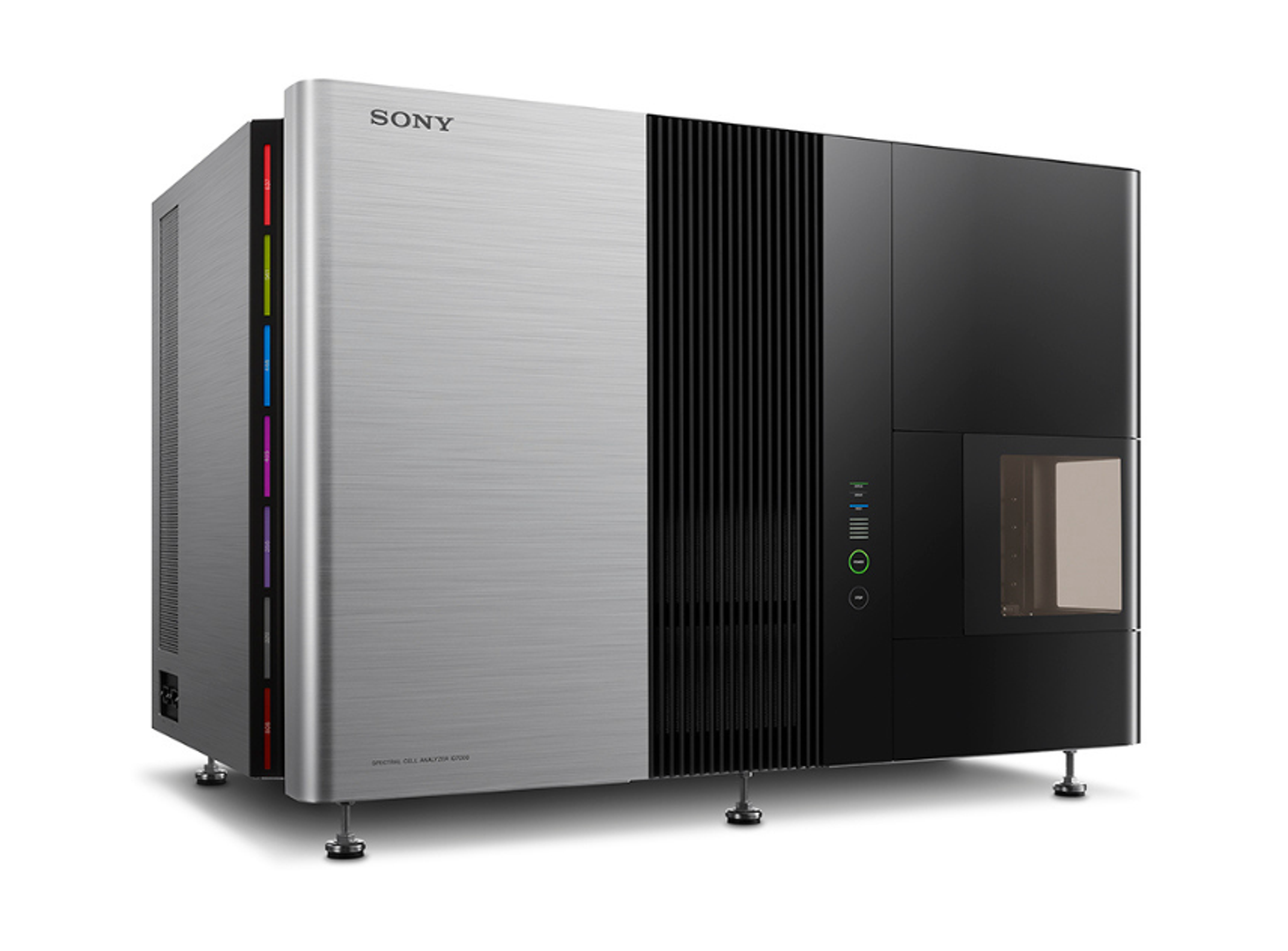Flow cytometry transformed by new spectral technology
Discover the benefits of incorporating spectral technology in the lab to advance your flow cytometry research
25 Sept 2024

Jennifer Cassels, Flow Cytometry Specialist at the University of Glasgow
The evolution of flow cytometry has reached a new pinnacle with the introduction of the ID7000™ Spectral Cell Analyzer by Sony Biotechnology, designed to elevate the capabilities of cell analysis and streamline laboratory workflows. Supporting high-parameter flow cytometry, the ID7000 delivers comprehensive insights into heterogeneous cell populations with high sensitivity to detect dim and rare populations. For lab managers and researchers, the transition to spectral technology is not only a significant upgrade, but a step towards more efficient and precise data collection.
SelectScience® sits down with Jennifer Cassels – a leading flow cytometry specialist at the University of Glasgow’s School of Cancer Sciences, to discuss the emergence of spectral technology in flow cytometry. With over 14 years of experience, Ms. Cassels has been integral to the university's flow cytometry facility. Her expertise and dedication have made her a key figure in the integration of advanced technologies, like the ID7000, into the facility's operations.
New frontier in flow cytometry
Spectral technology's main advantage lies in its comprehensive data collection and analysis capabilities. Unlike traditional flow cytometry, which relies on bandpass filters to detect specific wavelengths, spectral cytometry uses the full emission spectrum of each fluorochrome. This method captures more information from each sample and allows for the use of spectrally similar fluorochromes. The unmixing process then separates these signals into pure, individual channels to significantly enhance the resolution and accuracy of data. This approach simplifies multicolor panel design by eliminating the need for complex compensation matrices, thus reducing the likelihood of errors and increasing the reliability of results.
The ID7000 opens up so many doors for people to increase those panels and get even more information with other samples.
Jennifer Cassels Flow Cytometry Specialist at the University of Glasgow
The ID7000 spectral celll analyzer stands out with its ability to handle up to seven lasers and 186 detectors — the highest of any flow cytometer currently available. This expansive configuration allows researchers to perform experiments using 44 colors or more, limited only by the fluorochromes available. The system's lasers range from deep ultraviolet (320 nm) to infrared (808 nm), facilitating the detection of a wide array of signals.
Ms. Cassels highlights the impact of spectral technology on her research, noting that the ID7000 “opens up so many doors for people to increase those panels and get even more information with other samples.” This is particularly crucial for labs dealing with small patient samples, where maximizing data extraction is vital. One member of her team, for instance, used to split patient samples into six or seven different panels using 12 to 14 colors each. Fortunately, with the ID7000, users can now combine them into two panels, saving time, money, and precious samples.
Streamlined workflows
One of the standout features of the ID7000 is its ability to simplify high-parameter experiments and multicolor workflows. The inclusion of the Spectral Reference Library and Autofluorescence Finder are noteworthy innovations that save researchers significant time. The Autofluorescence Finder, in particular, is instrumental in identifying and subtracting contributions from autofluorescent populations, ensuring higher fidelity of data and more accurate visualization.
Ms. Cassels experience with the ID7000 highlights the efficiency brought about by these features. “The automation in the ID7000 works an absolute treat. The auto acquisition feature is so smooth, it behaves very well if the users prepare their samples well,” she notes. This automation extends to features like the automatic shutdown, which cleans and powers down the instrument after use, easing the workflow for researchers and reducing hands-on time.
The automation in the ID7000 works an absolute treat. The auto acquisition feature is so smooth, it behaves very well if the users prepare their samples well.
Jennifer Cassels Flow Cytometry Specialist at the University of Glasgow
The user-friendly software is another hallmark of the ID7000, making it accessible even to those new to spectral technology. She elaborates, “The software itself is very user-friendly. Once you get used to using it, it is very, very user-friendly.” This ease of use is enhanced by the sample groups feature, which allows each well in a 96-well plate to be configured differently. This means researchers can record a different number of events, run samples at different flow rates, and mix them differently, all within a single experiment. This flexibility opens up numerous possibilities for automation and efficiency.
Making spectral technology accessible
Adopting new technology often comes with a steep learning curve, but the ID7000 aims to make this transition as seamless as possible. Intuitive, guided workflows and user-friendly software tools simplify everything from startup to shutdown, automating quality control, and optimizing experiment creation. This design philosophy ensures that even users unfamiliar with spectral cytometry can quickly get up to speed.
One of my favorite things about the ID7000 is that users can actually touch very little of it. They open the door, put their tube rack or plate in, and they don’t have to handle tubes much after that.
Jennifer Cassels Flow Cytometry Specialist at the University of Glasgow
Ms. Cassels approach to training new users on the ID7000 exemplifies the importance of thorough instruction. “My training process is quite thorough. I make them watch some of the Sony webinars, which are really quite useful, especially for those new to spectral cytometry,” she explains. Her structured training sessions, coupled with detailed standard operating procedures (SOPs), have proven effective in helping users gain confidence with the new system.

The ID7000™ Spectral Cell Analyzer by Sony Biotechnology
Additionally, the ID7000’s capability to handle multiple configurations within a single experiment significantly enhances user efficiency. “One of my favorite things about the ID7000 is that users can actually touch very little of it. They open the door, put their tube rack or plate in, and they don’t have to handle tubes much after that,” Ms. Cassels says. This reduces user error and mechanical issues, making the process smoother and more efficient.
Advanced optics and unmixing
At the heart of the ID7000's superior performance is its advanced optics design, coupled with proprietary technologies that reduce electronic noise. This combination is crucial for achieving high sensitivity, enabling scientists to gather more accurate and comprehensive data from their samples. The Weighted Least Squares Method (WLSM) fluorescence unmixing algorithm further enhances this capability by separating individual spectral fingerprints, allowing for precise measurement of dim and rare phenotypic markers.
Ms. Cassels highlights the importance of this feature in her facility. “The unmixing part can be really quite difficult for the users to wrap their heads around because it’s so different from what they’re used to. So, once we go through the unmixing and autofluorescence, I generally then tell them to try to go for it themselves, to just run some experiments,” she says. The ability to practice with real data sets provided by Ms. Cassels has been instrumental in helping users master these new techniques.
Future proofing with spectral sorting
As the field of flow cytometry continues to evolve, the shift towards spectral sorting is inevitable. The ID7000 is designed to keep pace with these advancements, ensuring that labs are well-equipped for future developments. She notes that their facility is already looking forward to adopting spectral sorting technologies, having seen the potential benefits at recent conferences.
“I think that spectral cell sorting will offer so much more information on our samples than we get with conventional cell sorting,” she says. The ability to combine multiple panels into fewer, more comprehensive ones is a significant advantage, saving time, resources, and precious sample material. This forward-looking approach ensures that labs can continue to push the boundaries of research without being constrained by outdated technology.
As Ms. Cassels’ experience illustrates, the transition to spectral technology, while initially challenging, offers unparalleled benefits that are well worth the effort. With the ID7000, laboratories can achieve a deeper understanding of cellular biology, unlocking new possibilities for research and innovation.
Learn more about the ID7000™ Spectral Cell Analyzer and how it can elevate the capabilities of your cell analysis and streamline your laboratory workflows.

